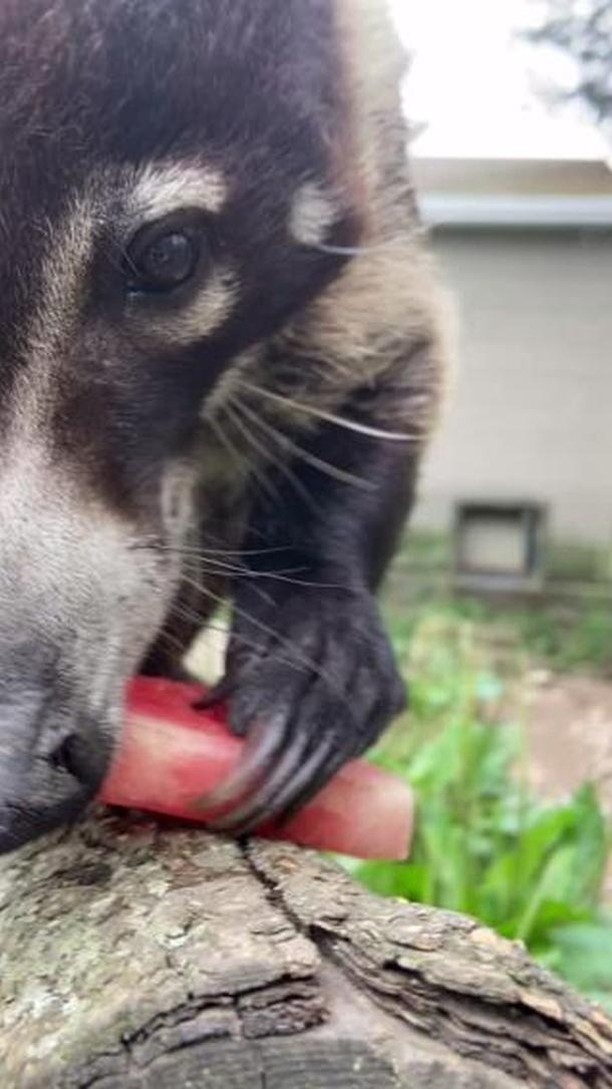The Amazing Coati: A Master of Sniffing Out Meals
Summary:
1. The coati possesses a long, flexible nose that aids in finding food.
2. As omnivores, they have a varied diet that includes vegetables, insects, small mammals, lizards, and fruit.
3. Coatis are skilled climbers and utilize their incredible sniffing abilities to locate their next meal.
Have you ever come across a coati during your nature walks or trips to the zoo? These fascinating creatures are known for their distinctive long, flexible noses, which are crucial to their survival. Today, we delve into the unique and captivating aspects of the coati’s intriguing nose and explore its omnivorous diet.
The coati’s elongated nose is truly a marvel of nature. It allows them to explore their environment, search for food, and detect potential threats. With their exceptional smell, these sleek mammals can sniff out a tasty meal from a considerable distance away. Whether munching on vegetation, insects, small mammals, lizards, or fruit, the coati’s omnivorous diet ensures its survival in diverse habitats.
Picture this: It’s a warm summer day, and you enjoy a juicy watermelon. Well, guess what? Coatis, share your love for this mouthwatering fruit! Their flexible noses help them identify ripe watermelons by their scent, allowing them to relish the sweet, refreshing taste like ours. It’s a perfect example of how these remarkable animals adapt to their surroundings.
But the coati’s nose isn’t just about finding food. Their sniffing prowess extends to locating potential enemies and ensuring their safety. By detecting scents from the wind; coatis can identify predators lurking nearby and take appropriate action, such as retreating to the safety of trees or other secure locations. It’s truly a testament to their remarkable survival instincts.
Another impressive feature of the coati is its ability to climb trees with remarkable agility. Their long noses aid in this endeavor, allowing them to grasp branches and navigate the treetops effortlessly. As they ascend, their keen sense of smell helps them locate insects, bird eggs, and small mammals that comprise a significant portion of their diet. It’s like they have their aerial buffet!
Coatis possess adaptive qualities that shine in their natural habitats. Their long snouts, among other physical attributes, enable them to thrive in various ecosystems, from dense forests to open grasslands. It’s truly captivating to witness these animals in action as they employ their extraordinary noses to explore their surroundings and procure their next meal.
As we navigate the natural world, we must marvel at the remarkable diversity and adaptability of creatures such as the coati. Their striking noses aid in their culinary quests and serve as a sensory tool for survival. The coati’s ability to navigate its environment, find food, and avoid danger is a testament to the wonders of nature and its ingenious designs.
Next time you come across a coati, take a moment to appreciate its long, flexible nose and all the incredible feats it allows this remarkable creature to accomplish. From sniffing out a juicy watermelon on a warm summer day to ensuring its safety in the face of potential threats, the coati’s nose is a true masterpiece of evolution. Let them inspire us to embrace our unique qualities and conquer life’s challenges with determination and adaptability, just like the amazing coatis.
*****
Source Description
A coati’s long, flexible nose is useful for sniffing a meal. As omnivores, they eat veggies, insects, small mammals, lizards and fruit.
Ahh, nothing like a juicy watermelon on a warm summer day! 🍉


